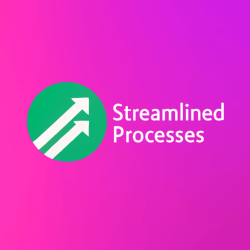For Next-Gen Marketing Automation, see our main page here.
Why Marketing Automation Needs a Makeover
The digital world is evolving at breakneck speed. Traditional automation tools are no longer enough. Consumer behavior has changed, so personalization must be smarter, faster, and omnichannel. That’s where Next-Gen Marketing Automation comes in—bridging data intelligence, AI, and real-time customer engagement like never before.
Back in the early 2000s, marketing automation focused on email drip campaigns and static segmentation. It worked—for a while. But today’s buyers expect more. Therefore, businesses must shift from rule-based workflows to dynamic, AI-powered strategies capable of adapting to individual behaviors in real time.
Defining Next-Gen Marketing Automation
Next-Gen Marketing Automation refers to intelligent, adaptive systems that personalize every interaction with predictive analytics, machine learning, and real-time data. These platforms go far beyond scheduled emails and triggered messages. Instead, they respond to context, behavior, preferences, and lifecycle stage—across various channels simultaneously.
Most importantly, these systems integrate with CRMs, social platforms, mobile apps, and customer service tools. As a result, they build smarter automation paths that feel more human and less robotic.
Core Features Driving Next-Gen Marketing Automation
- AI-Powered Personalization: Algorithms dynamically adjust messaging, content, and timing based on individual user data.
- Omnichannel Workflows: Automatically coordinate communication across email, SMS, chatbots, web pages, and social media.
- Predictive Lead Scoring: Machine learning assigns scores based on behavior, purchase signals, and sales potential.
- Behavioral Triggers: Actions on different platforms launch context-aware messages immediately.
- Real-Time Data Sync: Updates across all tools and systems ensure consistent messaging and up-to-date analytics.
For example, a user browsing winter coats may immediately receive an SMS discount, a follow-up email with winter accessories, and a push notification featuring new arrivals. All of this happens automatically and intelligently.
Benefits of Embracing Next-Gen Strategies
Choosing Next-Gen Marketing Automation delivers measurable results fast. For instance, personalized campaigns increase open rates by up to 26% and conversions by 5x compared to generic tactics.
Furthermore, businesses experience:
- Decreased customer churn thanks to timely communication
- Increased up-selling and cross-selling from tailored suggestions
- Faster sales cycles through intent-oriented messaging
- Improved marketing ROI via precision targeting
These tools can even reduce your team’s workload. Automating repetitive tasks means marketers spend more time analyzing strategy and less time creating content manually.
Real-World Example: B2C Retail Acceleration
A growing online retailer implemented a Next-Gen Marketing Automation system integrated with Shopify, Klaviyo, and Meta Ads.
The result? A 35% increase in customer lifetime value over six months. How? The system recognized customers who had viewed summer sandals but hadn’t purchased. It sent push notifications with limited-time discounts and rotated banner ads on Instagram, driving re-engagement.
Moreover, because the AI system had learned buying patterns, it adjusted discounts based on cart history, pushing more consumers towards checkout.
How Is It Different From Traditional Automation?
Classic tools rely on pre-set rules and don’t learn from interactions. In contrast, Next-Gen Marketing Automation evolves over time because of machine learning. It becomes more accurate the more it’s used.
Here’s a quick comparison:
| Traditional Automation | Next-Gen Marketing Automation |
|---|---|
| Static segmentation | Dynamic personalization with AI |
| Email-only workflows | Omnichannel interaction |
| Manual campaign analysis | Real-time performance optimization |
| Limited lifecycle engagement | Predictive customer journey mapping |
Common Pitfalls to Avoid
Transitioning to Next-Gen Marketing Automation requires preparation. Businesses often make mistakes that reduce ROI.
- Over-automation: Sending too many messages too quickly can feel spammy and overwhelm users.
- Poor data hygiene: AI relies on clean data. Bad input leads to irrelevant recommendations and faulty predictions.
- Lack of human oversight: Automation should aid marketers, not replace judgment. Always review automated outputs.
- Ignoring testing: A/B and multivariate tests sharpen AI and improve campaigns over time.
To clarify, businesses that combine automation with strategic thinking outpace those that simply “set and forget.”
How to Get Started
Adopting Next-Gen Marketing Automation doesn’t mean replacing your stack overnight. Instead, start with a step-by-step approach:
- Audit your current systems and identify gaps in personalization or speed.
- Define clear KPIs—whether it’s improving engagement, boosting leads, or increasing conversions.
- Choose platforms with AI and predictive capabilities that integrate with your CRM and CMS.
- Test workflows in a sandbox environment before full deployment.
- Continuously review performance and adjust based on analytics insights.
In addition, train your team to work with AI tools. Understanding how the technology serves your goals ensures long-term success.
Frequently Asked Questions
Is Next-Gen Marketing Automation only for big companies?
No. While large enterprises often lead adoption, small and mid-sized brands benefit equally. Many SaaS providers offer tiered solutions that grow with your budget and needs.
How important is AI in these tools?
AI is critical. It’s what allows the system to learn from behavior, predict trends, and automatically fine-tune messages. Without AI, automation is just about rules—not intelligence.
Will automation replace my marketing team?
Not at all. These tools empower your team by removing repetitive tasks, allowing more time for creative and strategic work. Think of automation as your assistant, not a replacement.
What industries are seeing the most impact?
eCommerce, SaaS, education, and financial services are leading the way. However, any industry relying on digital touchpoints can benefit from these systems.
How quickly can I see results?
Some companies notice improvements in engagement within weeks, while revenue lift may take a few months depending on campaign complexity and audience size.
The Future of Smarter Marketing
To sum up, Next-Gen Marketing Automation is not a luxury—it’s a survival strategy in a customer-first era. With smarter AI, real-time engagement, and predictive capabilities, businesses can connect with people like never before.
This article was created with the assistance of AI tools and reviewed by our team at Streamlined Processes LLC to ensure accuracy and relevance.
Follow us on Facebook here.

